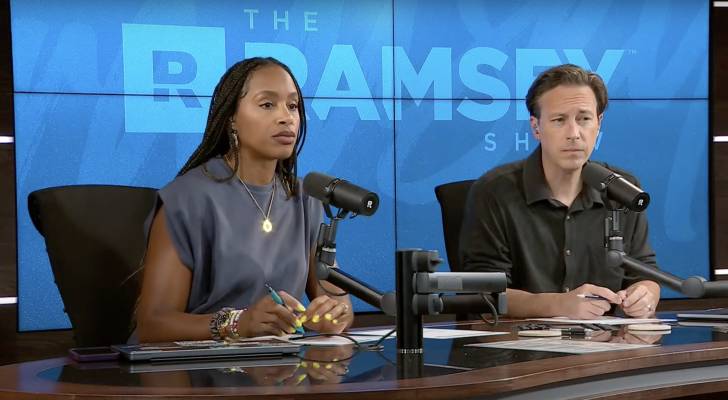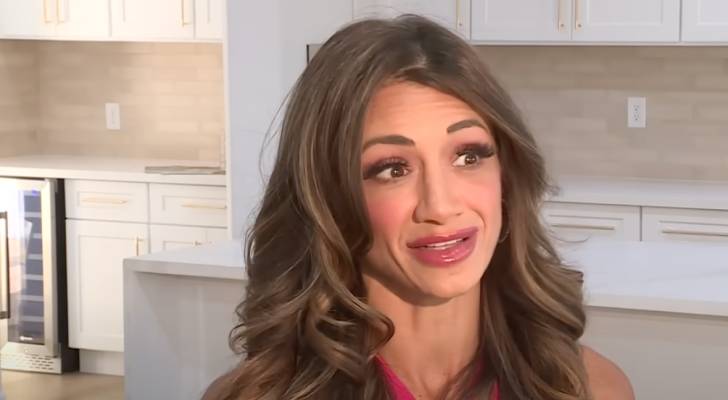A new study by Insurify is projecting a hike in homeowners insurance premiums — and Minnesotans will be particularly hard hit.
Indeed, Realtor.com says that Minnesotans will face the fifth-highest rise in homeowners insurance premium rates in the country by the end of this year.
But some are saying it’s already happening.
Natalie Beazer, along with her sister, Noleene Counts, searched far and wide for an accessible multi-generational home in Rogers, MN. Beazer told 5 Eyewitness News that “it was just struggle after struggle after struggle.” Then, finally finding a potential new home, they struggled to find an affordable homeowners insurance policy.
“It’s still ridiculously high,” Counts told 5 Eyewitness News.
Their ‘affordable’ policy is around $4,000 a year, which is double what they were paying to insure their previous home.
Don’t miss
- Thanks to Jeff Bezos, you can now become a landlord for as little as $100 — and no, you don’t have to deal with tenants or fix freezers. Here’s how
- I’m 49 years old and have nothing saved for retirement — what should I do? Don’t panic. Here are 6 of the easiest ways you can catch up (and fast)
- Robert Kiyosaki warns of a ‘Greater Depression’ coming to the US — with millions of Americans going poor. But he says these 2 ‘easy-money’ assets will bring in ‘great wealth’. How to get in now
How extreme weather is fueling insurance price hikes
Minnesotans can expect to spend about 15% more this year on their homeowners policy, according to an Insurify report.
Realtor Amanda Cox Zuppan told 5 Eyewitness News that her clients are already seeing higher premiums.
“We’re seeing premiums double and even triple at this point, and it really is affecting affordability for home buyers … specifically first-time home buyers or lower-income home buyers who are already struggling to come up with those monthly payments.”
What’s behind these sharp increases? The weather.
In 2024, there were 27 confirmed weather or climate disaster events in the U.S. with losses exceeding $1 billion each, according to the National Centers for the Environmental Information (NCEI).
But insurers need to stay profitable, so they’re passing on the cost of higher claim payouts to customers through higher premiums.
The average annual cost of home insurance is predicted to increase 8% to a national average of $3,520 by the end of the year, according to Insurify. That would translate to an estimated $261 over the next 12 months.
But some states, like Minnesota, will pay more than others.
“Areas that are more sensitive to climate risks will naturally experience sharper insurance increases, but even less disaster-prone areas will see insurance premiums rise simply due to the fact that repairs have become more costly,” said Joel Berner, senior economist at Realtor.com, in a trends analysis piece.
“Labor and material costs continue to grow,” he added, “which puts insurers in a position where they have to pay out more for full-replacement claims and therefore have to charge higher premiums.”
From hurricanes and tornadoes, to hail, flooding and wildfires, some parts of the country are becoming hard to insure.
Floridians continue to pay the highest home insurance premiums, which are expected to rise to $15,460 by the end of the year — that’s a 9% increase. The biggest culprit? Hurricanes. California homeowners will see their premiums jump 21%, thanks to factors such as the Palisades and Eaton fires. But Louisiana’s premiums are rising the fastest.
However, homeowners in every state will see price increases from 2% to 27%.
Read more: Want an extra $1,300,000 when you retire? Dave Ramsey says this 7-step plan ‘works every single time’ to kill debt, get rich in America — and that ‘anyone’ can do it
What can Minnesota homeowners do?
Mark Kulda, former Insurance Federation of Minnesota spokesperson, told 5 Eyewitness News in a previous newscast that an increase in storms in the state is largely to blame for the increase in premiums.
“All of a sudden, in 1998, someone [flipped] the switch, and we had year after year after year of billion-dollar-plus storms come… Now, we have six billion-dollar storms in one year,” he said.
“They’re stronger, they’re more intense, they’re more frequent, and it’s costing everybody more money.”
Since 1980, Minnesota has experienced 58 weather disasters that have caused an estimated $20 to $50 billion in damages, according to the Insurance Federation of Minnesota, a non-profit state insurance trade association.
So what can homeowners do about this? After all, they can’t exactly control the weather.
The Insurance Federation of Minnesota says they can start by reviewing their homeowners insurance coverage. It may make sense to shop around and compare policy options from different providers or bundle it with other policies from the same provider.
The National Association of Insurance Commissioners offers a Consumer Insurance Search tool to help research specific insurance companies, including complaint data.
But in high-risk areas, some insurers may stop selling policies altogether. However, the Minnesota Fair Access to Insurance Requirements (FAIR) Plan can help. The FAIR Plan provides “basic and affordable property insurance” to homeowners “without regard for environmental hazards.”
And, while it hasn’t yet launched, the Strengthen Minnesota Homes program will (eventually) provide financial assistance to homeowners “to improve the resilience of their homes to protect against extreme weather events such as high wind and hail.”
What to read next
- You don’t have to be a millionaire to gain access to this $1B private real estate fund. In fact, you can get started with as little as $10 — here’s how
- Here are 5 ‘must have’ items that Americans (almost) always overpay for — and very quickly regret. How many are hurting you?
- Accredited investors can now buy into this $22 trillion asset class once reserved for elites – and become the landlord of Walmart, Whole Foods or Kroger without lifting a finger. Here’s how
- Rich, young Americans are ditching the stormy stock market — here are the alternative assets they’re banking on instead
Stay in the know. Join 200,000+ readers and get the best of Moneywise sent straight to your inbox every week for free. Subscribe now.
This article provides information only and should not be construed as advice. It is provided without warranty of any kind.




